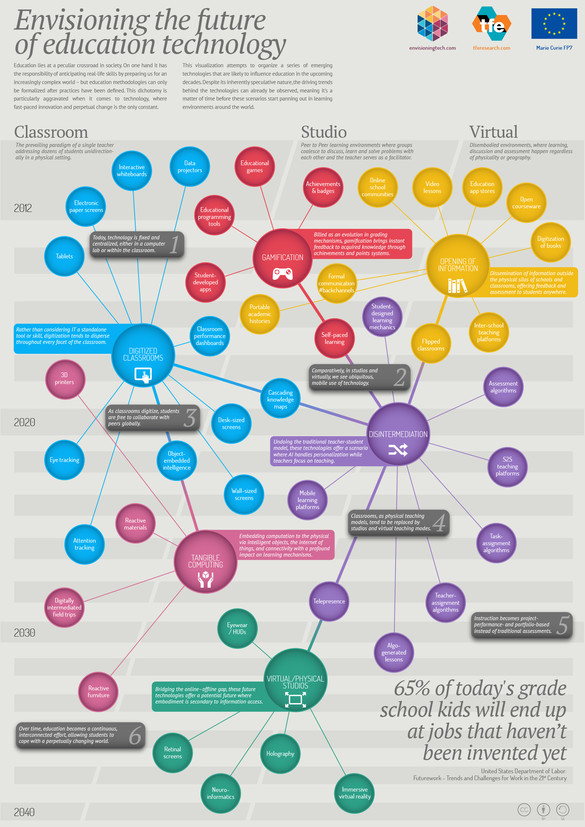The Disturbing Transformation of Kindergarten
 One of the most distressing characteristics of education reformers is that they are hyper-focused on how students perform, but they ignore how students learn. Nowhere is this misplaced emphasis more apparent, and more damaging, than in kindergarten.
One of the most distressing characteristics of education reformers is that they are hyper-focused on how students perform, but they ignore how students learn. Nowhere is this misplaced emphasis more apparent, and more damaging, than in kindergarten.
A new University of Virginia study found that kindergarten changed in disturbing ways from 1999-2006. There was a marked decline in exposure to social studies, science, music, art and physical education and an increased emphasis on reading instruction. Teachers reported spending as much time on reading as all other subjects combined.
The time spent in child-selected activity dropped by more than one-third. Direct instruction and testing increased. Moreover, more teachers reported holding all children to the same standard.
How can teachers hold all children to the same standards when they are not all the same? They learn differently, mature at different stages – they just are not all the same especially at the age of 4-6.
Is this drastic shift in kindergarten the result of a transformation in the way children learn? No! A 2011 nationwide study by the Gesell Institute for Child Development found that the ages at which children reach developmental milestones have not changed in 100 years.
For example, the average child cannot perceive an oblique line in a triangle until age 5 ½. This skill is a prerequisite to recognizing, understanding and writing certain letters. The key to understanding concepts such as subtraction and addition is “number conservation.” A child may be able to count five objects separately but not understand that together they make the number five. The average child does not conserve enough numbers to understand subtraction and addition until 5½ or 6.
If we teach reading, writing, subtraction and addition before children are ready, they might memorize these skills, but will they will not learn or understand them. And it will not help their achievement later on.
 Child development experts understand that children must learn what their brains are ready to absorb. Kindergarten is supposed to set the stage for learning academic content when they are older. If they are going to push our kindergarten children to move faster, what does that say for the push for “educating” Pre-K?
Child development experts understand that children must learn what their brains are ready to absorb. Kindergarten is supposed to set the stage for learning academic content when they are older. If they are going to push our kindergarten children to move faster, what does that say for the push for “educating” Pre-K?
Play is essential in kindergarten – in fact in any child under the age of 5. Through play, children build literacy skills they need to be successful readers. By speaking to each other in socio-dramatic play, children use the language they heard adults read to them or say. This process enables children to find the meaning in those words.
There is a wide range of acceptable developmental levels in kindergarten; so a fluid classroom enables teachers to observe where each child is and adjust the curriculum accordingly.
Two major studies confirmed the value of play vs. teaching reading skills to young children. Both compared children who learned to read at 5 with those who learned at 7 and spent their early years in play-based activities. Those who read at 5 had no advantage. Those who learned to read later had better comprehension by age 11, because their early play experiences improved their language development.
Yet current educational policy banishes play in favor of direct instruction of inappropriate academic content and testing; practices that are ineffective for young children.
The No Child Left Behind Law played a major role in changing kindergarten. Upper-grade curricula were pushed down in a mistaken belief that by learning reading skills earlier, children would fare better on standardized tests. Subjects not tested by NCLB were de-emphasized. Lawmakers insisted that standardized tests assess reading at earlier ages, even though standardized tests are invalid for children under 8.
 These changes have the harshest effect on our most vulnerable children. The UVA study found that in schools with the highest percentage of children of color and children eligible for free-and-reduced-priced lunch, teachers had the most demanding expectations for student performance.
These changes have the harshest effect on our most vulnerable children. The UVA study found that in schools with the highest percentage of children of color and children eligible for free-and-reduced-priced lunch, teachers had the most demanding expectations for student performance.
To make matters worse, the drafters of the Common Core ignored the research on child development. In 2010, 500 child development experts warned the drafters that the standards called for exactly the kind of damaging practices that inhibit learning: direct instruction, inappropriate academic content and testing.
These warnings went unheeded.
Consequently, the Common Core exacerbates the developmentally inappropriate practices on the rise since NCLB. Teachers report having to post the standards in the room before every scripted lesson, as if 5-year-olds can read or care what they say. They time children adding and subtracting, and train them to ask formulaic questions about an “author’s message.” All children are trained in the exact same skill at the same time. One teacher lamented that “there is no more time for play.” Another wrote “these so-called educational leaders have no idea how children learn.”
It may satisfy politicians to see children perform inappropriately difficult tasks like trained circus animals. However, if we want our youngest to actually learn, we will demand the return of developmentally appropriate kindergarten.


